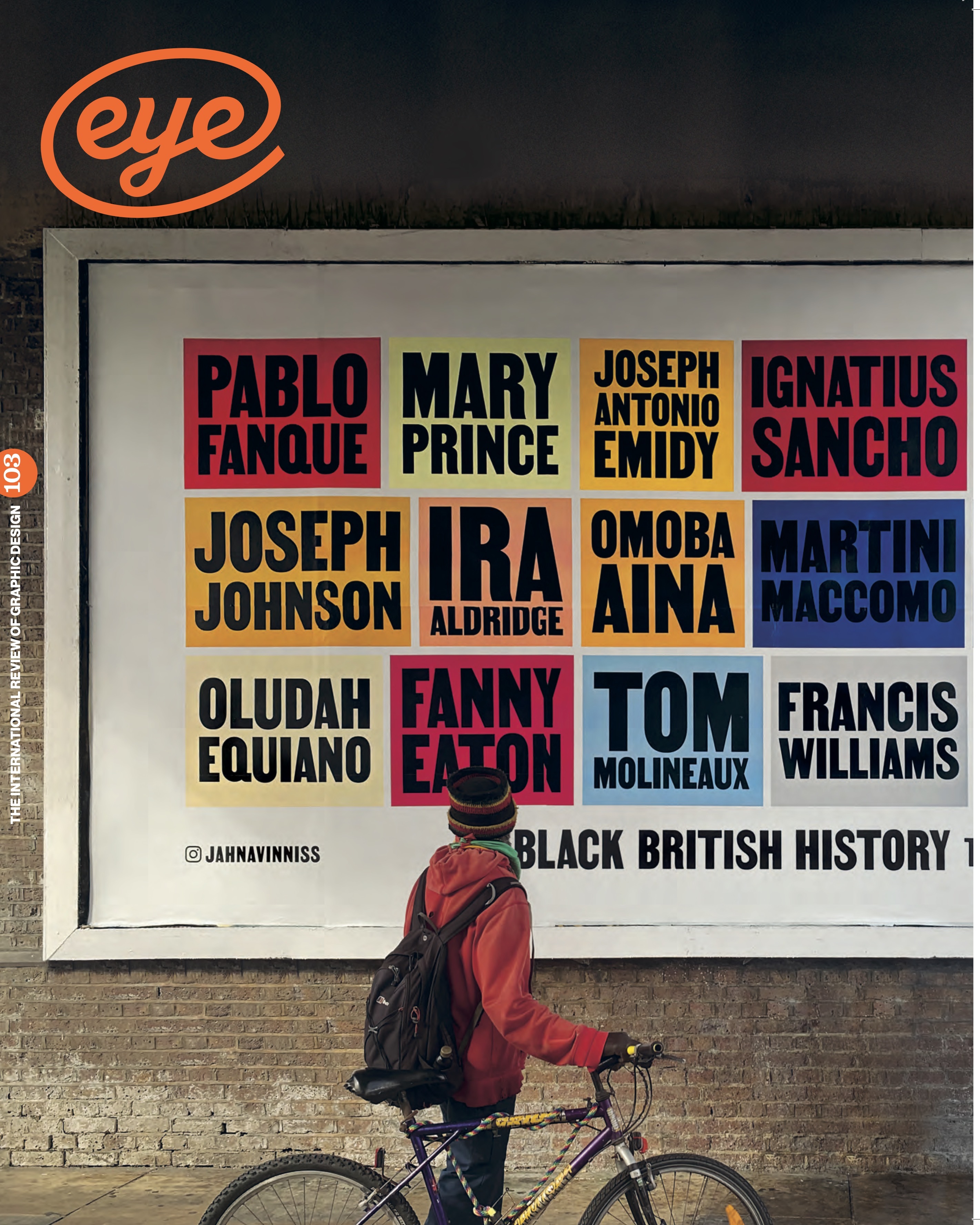Summer 2022
Unfinished business
Scott King’s rallying call for creative freedom takes a satirical swipe at cultural gatekeepers. By Rick Poynor
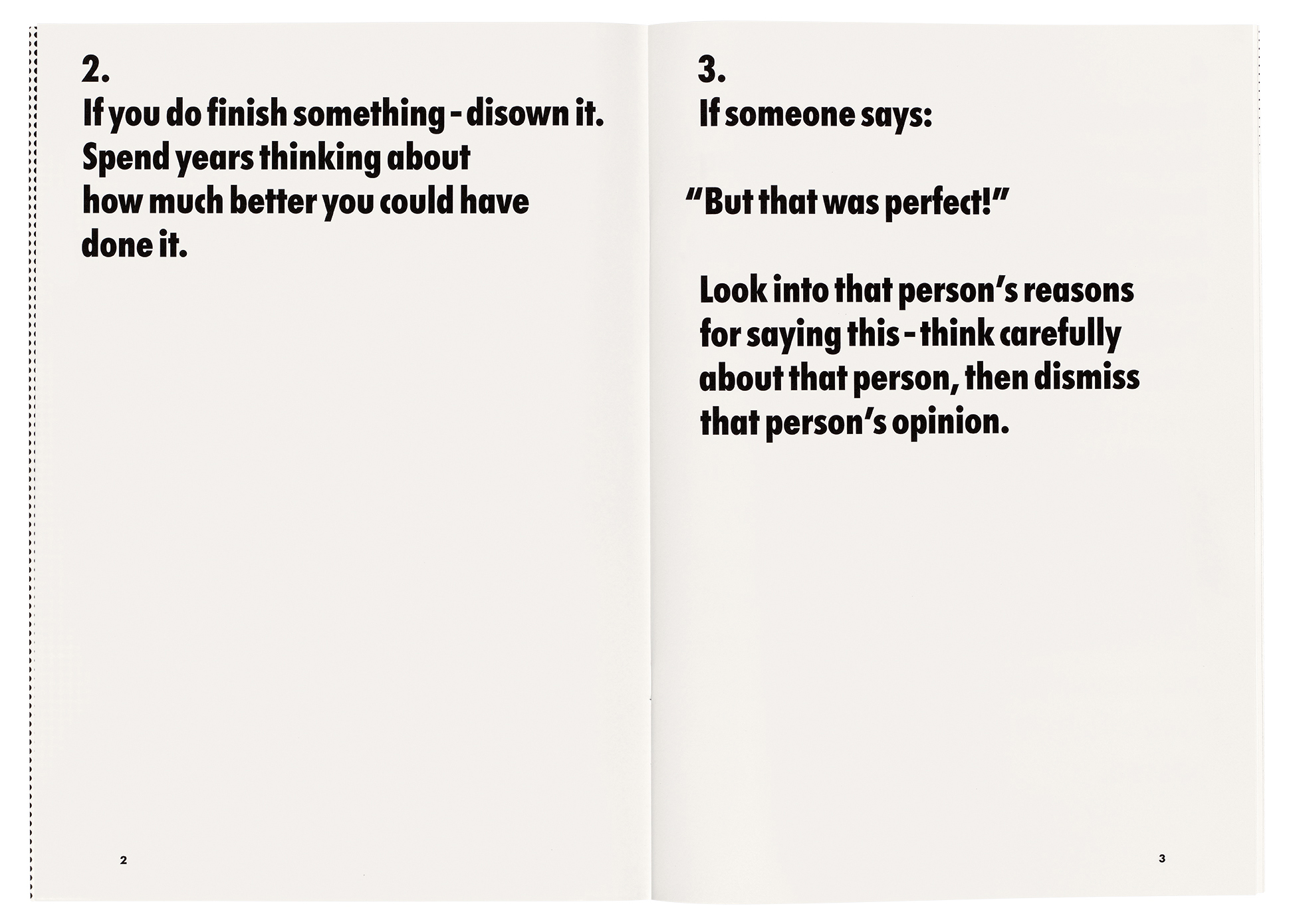
‘Never finish anything. This is the first and most important rule of Debrism.’ So begins – and ends – The Debrist Manifesto, written and self-published last summer by designer and artist Scott King. The 48-page publication became a cultish, unexpected hit. Initially, King printed 500 copies. He soon needed to print another 1000 – at ‘considerable expense’, he says. Most of this print run has now been sold and a second reprint appears more than likely.
I was one of those who immediately signed up to the bright red booklet with the towering title, even though I had no idea what ‘Debrist’ meant. Something to do with ‘debris’? It looked urgent and decisive, but it was King’s name on the project that made it irresistible because he has form in this area. On his Instagram account, he recently reminisced about Crash!, a satirical broadside that he self-published in the late 1990s with the writer Matthew Worley. In short texts set out like a manifesto, they tore strips off some of British popular culture’s then most irritating leading lights: Chris Evans, David Baddiel, Oasis, and Hello! magazine. As art director of the Sleazenation style magazine, King delivered equally trenchant graphics, including the famous ‘Do you believe in revolution?’ cover, featuring the pop singer Cher restyled as Marxist revolutionary Che Guevara (see Eye 40). Full of his own ideas and never a conventional designer, he repositioned himself by degrees as an artist.
The Debrist Manifesto, written and self-published by Scott King (as International General), 2021. Co-designed by King and Richard Massey. Additional design by Rhys Atkinson.
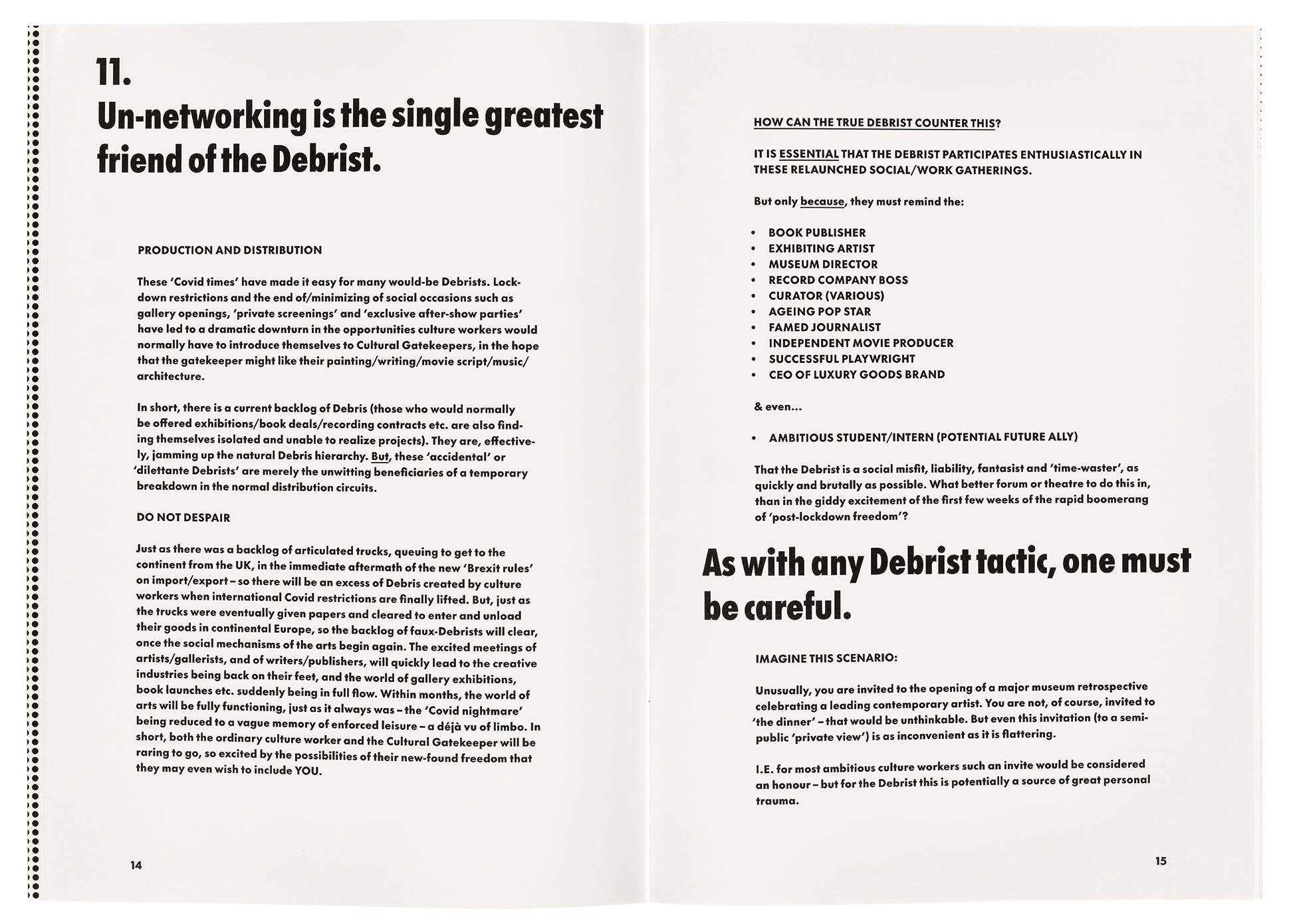
The Debrist Manifesto also appealed to me because it labelled itself unapologetically as a manifesto. By the end of the twentieth century, the manifesto form felt untenably idealistic, but the millennium seemed to trigger a revival of enthusiasm for the concise, declamatory text as a way of blasting the old and ushering in the new. In 2008, the Serpentine Gallery in London staged a ‘Manifesto Marathon’ where artists, architects and writers proclaimed radical proposals. ‘This is a declaration of artistic will and new-found optimism,’ trumpeted the organisers. Penguin published two thick volumes of artists’ manifestos as Modern Classics. In the 2015 film Manifesto, Cate Blanchett, styled as a series of startlingly diverse characters, delivers excerpts from historical manifestos: a conceptual tour de force. An Icograda-backed initiative, Manifesto, showcased design manifestos by Ken Garland, Bruce Mau, Milton Glaser, Experimental Jetset, and many more. To judge by Laboria Cuboniks’ The Xenofeminist Manifesto: A Politics for Alienation (Verso, 2018) and Richard Phoenix’s D.I.Y. as Privilege: A Manifesto (Rough Trade Books, 2020) the polemical genre is thriving and the causes that inflame the manifesto writer’s passion are increasingly subtle and idiosyncratic.
Spreads from The Debrist Manifesto. Employing well established techniques of manifesto construction, King makes full use of his pages to give rhythm and impact to the writing.
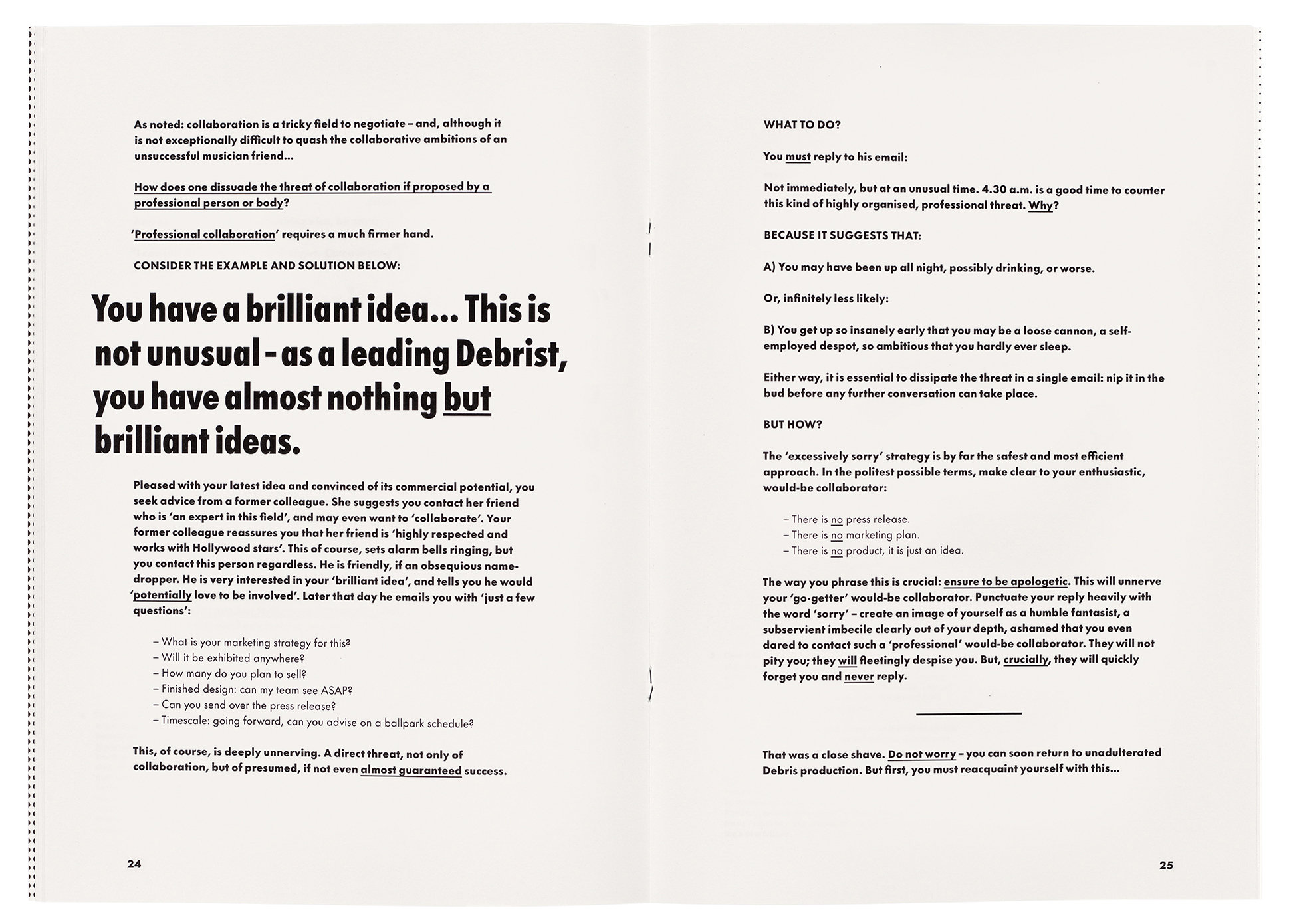
King’s A4 booklet, co-designed with Richard Massey, makes full use of the genre’s tried and tested visual rhetoric – dynamic, clarion call layouts and fluctuating type weights and sizes. The initial propositions occupy a single page, each one numbered and rendered in rebuttal-baffling boldface. King outlines a series of principles for ensuring that no project is ever finished. If someone commends something, dismiss their praise. If a publisher shows interest in a project, break off all communication. Work on many projects at once to make sure none can be completed. Cultivate multiple styles to guarantee you won’t be identified with a single style and become a brand. Make a daily list full of unachievable tasks. Having summarised his tactics for shunning any possibility of success as a culture worker, King then recaps the basics at length. Along the way, he provides copious footnotes and numerous examples, qualifications and digressions.
Does King mean all this or is it some kind of joke? The manifesto is certainly humorous. He is a natural writer with a persuasive control of tone. He tells a good story and I laughed aloud more than once. King has years of experience working in the visual arts and dealing with ‘cultural gatekeepers’ (gallery owners, curators, critics, publishers) and his observations ring true. He even puts it in those terms: ‘I wrote it as my truth. I didn’t edit it, I just let it pour out, and I wrote the bulk of it in two days,’ he told Jon Savage in Interview magazine. Like other creative people, whose work depends on getting out, networking and collaborating, the pandemic had becalmed him. He needed a way forward and this was when he returned to an earlier, unfinished project – the manifesto – as a way to ‘confront my own situation’.
The over-emphasis is part of the humour.
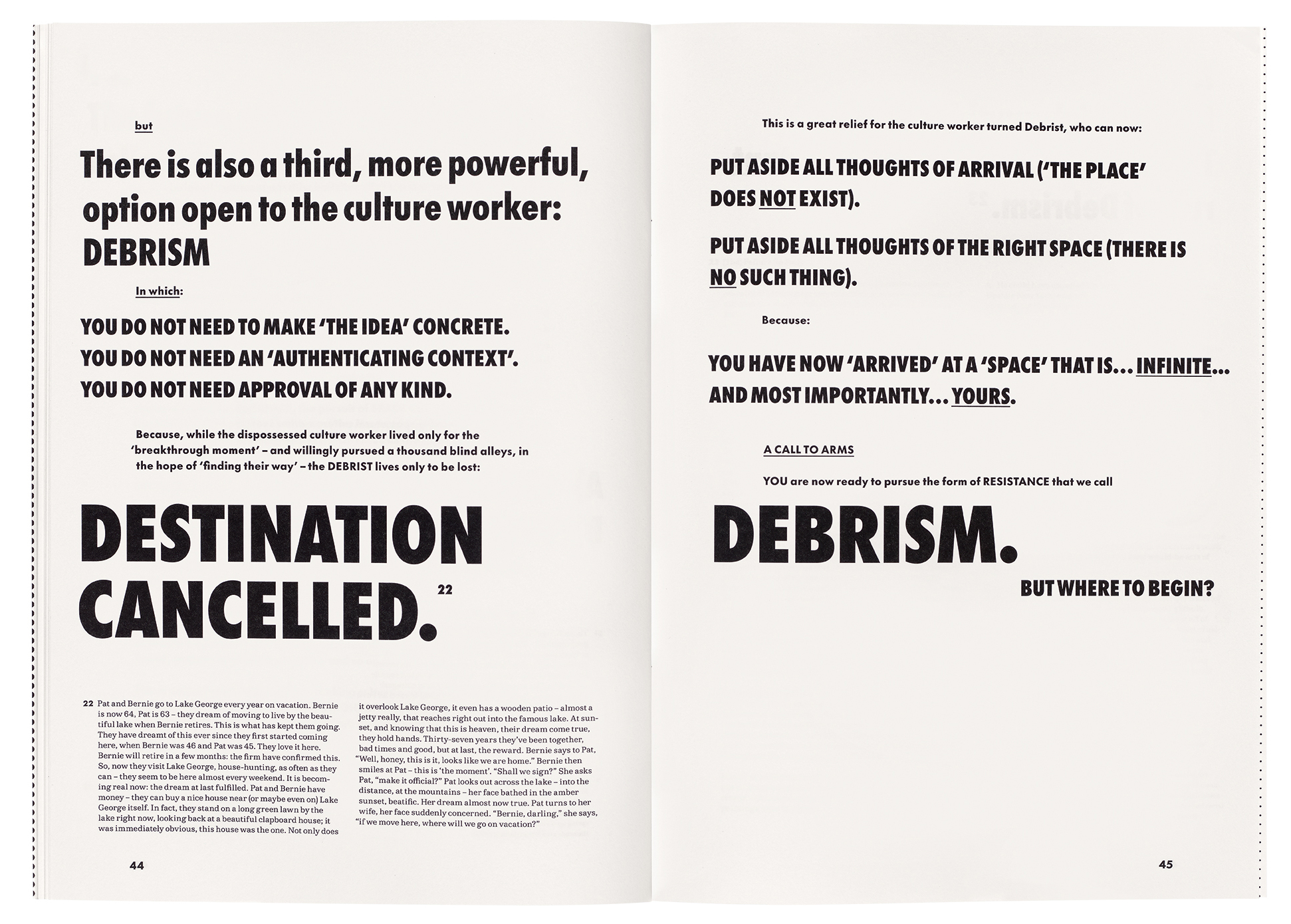
The completed and now successful manifesto may seem to be its own refutation. King hasn’t followed his advice to the ‘dispossessed culture worker’ and given up or moved away. If I read him correctly, he has chosen a third option, which he outlines at the end. This requires creative people to proceed without seeking the approval and authentication of cultural gatekeepers with predictable and limiting agendas. The manifesto is evidently not a set of commandments that must be followed to the letter. It’s a purposefully wayward inspirational guide to occupying your own mental and artistic space.
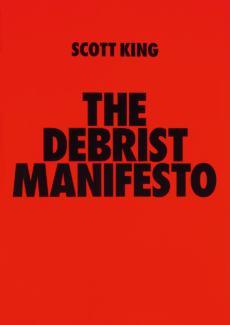
Rick Poynor, writer, Eye founder, professor of design and visual culture, University of Reading
First published in Eye no. 103 vol. 26, 2022
Eye is the world’s most beautiful and collectable graphic design journal, published for professional designers, students and anyone interested in critical, informed writing about graphic design and visual culture. It is available from all good design bookshops and online at the Eye shop, where you can buy subscriptions and single issues.

